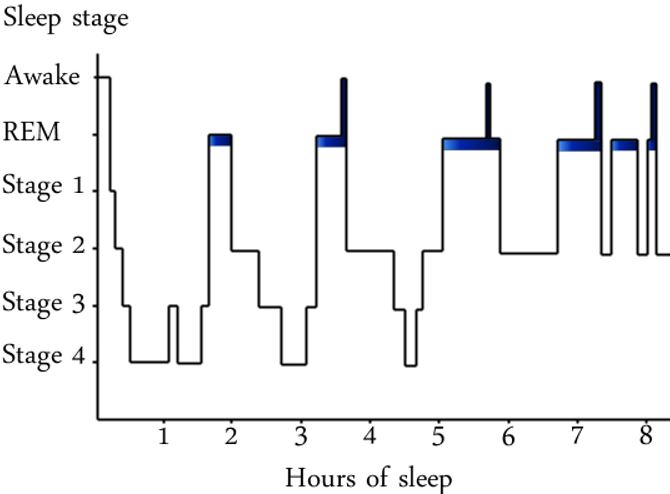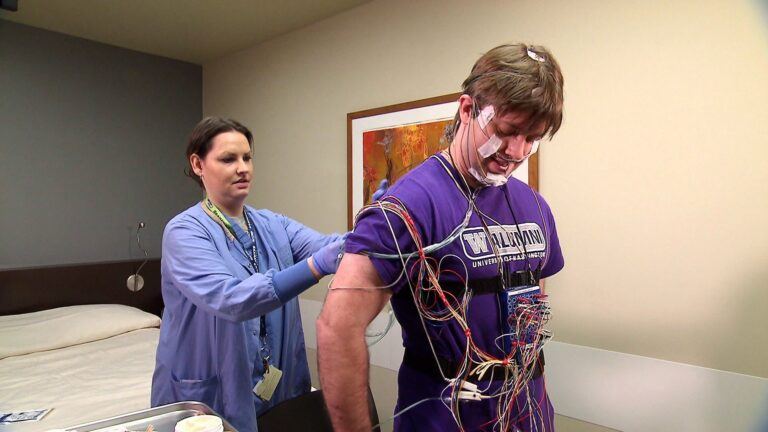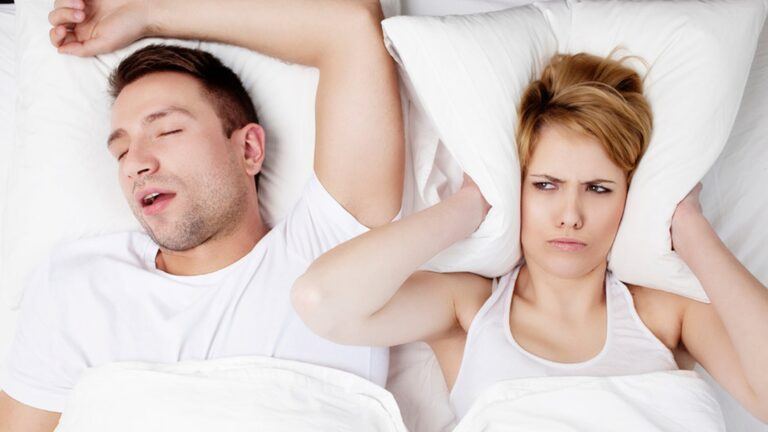You’ve probably heard that you pass through several stages while sleeping. In actuality, a lot of things go on inside your brain while being in slumber and these specific brain activities create different stages or types of sleep.
This post reveals the said biological mysteries associated with sleep including its stages and the related brain activities. Keep reading and get to know about all that’s involved!

Defining Sleep and Its Types
The secret of survival lies in a proper sleeping pattern. It’s as vital as taking adequate food and water. When it comes to understanding the types of sleep, you can categorize them into two different stages. They are- Non REM and REM. The Non REM stage involves 3 sequential sub-stages- 1, 2, and 3.
Sleep – The Anatomy
Did you know, sleep involves several brain structures? To understand the types of sleep, it’s imperative to understand the mechanism that puts you to sleep. The following section of this post gives a glance at the sleep mechanism.
Are you struggling with sleeping? Learn more about ambient sounds.
The Hypothalamus
Located deep inside the brain, this peanut-sized structure holds a large group of nerves. These nerves regulate sleep and arousal. Apart from the nerves, the hypothalamus contains the Suprachiasmatic Nucleus (SCN). In actuality, it can be defined as a cluster of millions of cells responsible for receiving the signal about the light exposure straight from the eyes. The SCN controls the behavioral rhythm of the eyes.
Pineal Gland
It’s located between the two hemispheres of the brain. Its primary role is receiving the signal from the SCN and increasing the production of melatonin. This specific hormone puts you to sleep once the lights are turned off.
The Brain Stem
Settling at the base of the brain, it works as a communicator. It tells the hypothalamus to control the metamorphosis of sleep and wake. It contains sleep-promoting cells that produce GABA, a brain chemical that controls the arousal centers of the hypothalamus.
Basal Forebrain
This structure plays a vital role in promoting sleep and wakefulness. The cells of the basal forebrain release adenosine that helps in supporting the sleep drive.
Apart from the structures mentioned above, the amygdala and thalamus, two other vital structures of the human brain are counted as the players of the sleep mechanism. At a certain type or stage of sleep, REM, they work as the relaters of emotions and senses.
The Types of Sleep/ Sleep Stages

As said before, you can categorize the types of sleep into two different stages – REM and Non-REM. Both of them are connected to certain neuronal activity and brain waves. While sleeping, you pass through every stage of both REM and Non-REM sleep.
Non-REM Sleep: Stages
Stage 1
Non-REM sleep can be better defined as the transition from wakefulness to sleep. This stage may last for several minutes. In this stage, your eye-movements, breathing, and heartbeat start to slow down. Besides, your muscles experience the feeling of relaxation and they twitch occasionally.
Stage 2
This takes the activities of stage 1 further. The heartbeat and breathing are even more slowed down at this stage and the muscles are holistically relaxed. This is the stage when your body temperature reduces and your eyes stop moving.
The brain-wave activity is also considerably slow, however, it’s marked by little bursts of electrical activity. This is the stage that repeats the most in the entire sleep cycle.
Stage 3
This stage makes you feel fresh in the morning. It’s the span of a deep sleep, in which, the heartbeat and breathing slow down to their lowest level. Brain waves work the least and this is the stage when you can hardly be awakened.
REM Sleep
This stage appears right after 90 minutes of falling asleep. Behind the closed eyes, the eye-balls move rapidly from one side to another. The brain experiences a mixed wave activity, which is similar to wakefulness. You start to breathe faster, in an irregular motion, and your heart beats fast.
This is the time when your subconscious is drastically active and as a result, you may dream. The more surprising fact is, at this stage, your hand and leg muscles get temporarily paralyzed. For this reason, you can’t act out your dreams. As you grow older, the span of REM sleep decreases.
Learn more about lucid dreaming and sleep paralysis.
So, these are the types of sleep that every human experience every day. Now, let’s explore some interesting facts on sleep mechanisms.
What Puts You To Sleep? Understanding the Sleep Mechanism…
There are two specific biological mechanisms, which regulate your sleep and wakefulness – sleep-wake homeostasis and Circadian rhythm. Let’s take a close look at them!
Sleep-wake Homeostasis
This mechanism is responsible for keeping a track of your need for sleep. It generates a drive for sleep and reminds your brain to act accordingly, it also controls the intensity of sleep. and it gets more prominent with every hour you’re awake. In this way, it awards you with a good-night sleep, after longs hours of hardship.
Many factors influence the sleep-wake mechanism of the human body. The list includes but is not limited to- stress, sleep environment, eating habits, drugs, and alcohol consumption, and medication.
Circadian Rhythms
People who work in nightshifts often experience sleeping issues. The circadian rhythm is responsible for the same. It directs a vast range of functions that include wakefulness, metabolism, hormone secretion, and body temperature. These rhythms bring the feeling of being sleepy and as a result, your body feels the urge for sleeping.
These rhythms are usually guided by the body’s bio-clock and they synchronize with environmental cues like temperature and light. However, they also continue working when the cues are not present.
Often people experience sleep issues after moving to a different time-zone. This happens because the circadian rhythms always follow the bio-clock and act accordingly. But with the changes in time zone, they can’t adjust with the actual timing because of the mismatched internal timings.
Neurotransmitters, Genes, and Sleep – The Unique Relation
Did you know, your sleeping pattern is greatly influenced by your gene and neurotransmitters? Sounds interesting? Well, let’s explore how it works!
Sleep and Genes
Genes play a considerable role when it comes to detecting how much sleep your body requires. There are “clock” gins like Cry, Per, and Tim that deeply regulate the circadian rhythms of the body.
Scientists across the globe are trying to identify the molecules that are doing such miracles and we’re expecting to get adequate information regarding the same in the near future.
Neurotransmitters
There are a lot of clusters in the human brain that contains sleep-promoting neurons. They hold the power of “switching off” the activity of the cells that regulate the signal of sleep and arousal. For example, Orexin and norepinephrine keep parts of the brain conscious while working, whereas, GABA is responsible for sedation and muscle relaxation. Serotonin regulates the anxiety level, adrenaline controls the emotions, and together, when their secretion levels are perfect, they produce the ever-desired, peaceful sleep.
Now when we know almost everything about the sleep mechanism and the types of sleep, let’s check out some effective tips that can help us in improving the pattern of sleeping. Here we go!!
- Follow a particular sleep schedule.
- Say good-bye to nicotine, caffeine, and alcohol.
- Take a warm bath before heading to bed.
- Eat healthily.
- Create a suitable atmosphere for sleeping.
- Exercise regularly.
Hope this helps! As we all know, “health is wealth” and when it comes to living a holistically healthy life, you need to take care of your sleeping pattern along with the food habit and lifestyle. Eat well, sleep well, go healthy and enjoy your life to the fullest!







